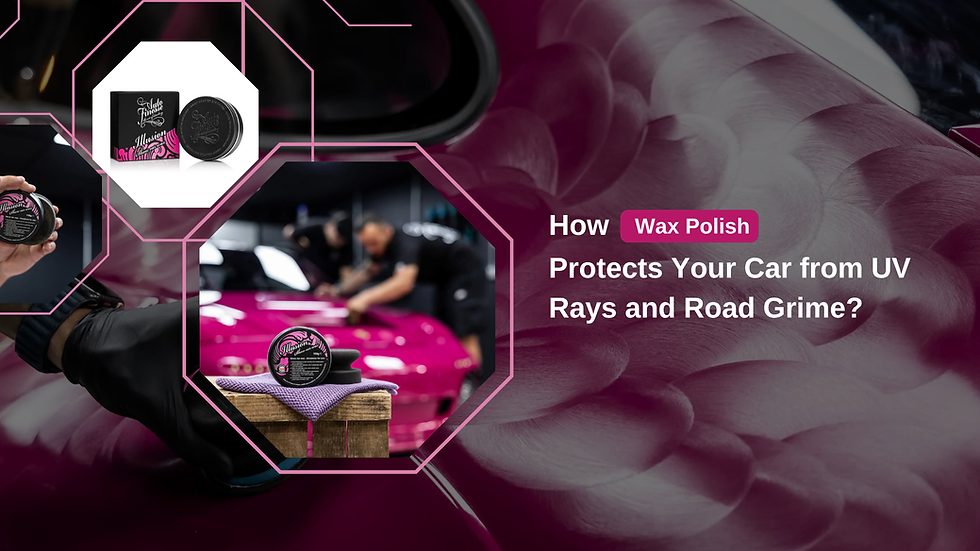Microfibre Car Drying Towels vs Chamois: Which Should You Choose?
- autofinesseuk
- Sep 4
- 3 min read
When it comes to drying your car after a wash, the tool you use can make all the difference. Leaving behind water spots not only ruins the look of your freshly cleaned vehicle but can also damage paintwork over time. For decades, the chamois leather was the go-to accessory for car enthusiasts. However, with the growing popularity of modern detailing products, the microfibre car drying towel has become the preferred choice.
So, which option is right for you—microfibre towels for cars or the traditional chamois? Let’s explore the key differences to help you make a knowledgeable decision.

What Is a Chamois?
A chamois, often made from natural sheepskin leather, is designed to absorb water effectively. It has been a staple in car care for years because of its ability to soak up large amounts of water, leaving the surface relatively dry. However, using a chamois comes with some downsides. Because it lacks a plush fibre structure, any dirt or grit left on the paint can easily be dragged across the surface. This can cause fine scratches or swirl marks that dull your car’s shine.
Another issue is maintenance. A chamois needs to be kept damp to remain soft and pliable. If it dries out, it becomes stiff and can be difficult to use. Special cleaning and conditioning are also required to prolong its lifespan.
What Is a Microfibre Car Drying Towel?
A microfibre towel is made from ultra-fine synthetic fibres—typically a blend of polyester and polyamide—that are thinner than a strand of human hair. These fibres are split during manufacturing, creating a structure that is highly absorbent and gentle on surfaces. A microfibre cloth for car care doesn’t just wipe water away; it traps moisture and any small particles within its fibres, reducing the risk of scratches.
Microfibre towels are designed for versatility. A single microfibre car drying towel can handle drying, buffing, polishing, or even cleaning interiors. Unlike chamois, they are soft straight out of the package, lightweight, and ready to use anytime. Plus, they are simple to maintain—just wash them in the machine and they’re good to go again.
The Main Differences Between Chamois and Microfibre Towels
1. Absorbency
Chamois: Absorbs well but needs to be wrung out frequently.
Microfibre Towels for Cars: Can hold several times their weight in water, drying large panels quickly with fewer wrings.
2. Paint Safety
Chamois: Risks dragging dirt across paint, causing fine scratches.
Microfibre Car Drying Towel: Safer for paintwork as fibres lock away particles, reducing damage.
3. Ease of Use
Chamois: Must be pre-soaked to soften before use.
Microfibre Cloth for Car: Always soft and ready to use, making it more convenient.
4. Maintenance
Chamois: Requires special care and conditioning.
Microfibre Towels: Machine washable, quick-drying, and long-lasting.
5. Durability
Chamois: Can deteriorate if not cared for correctly.
Microfibre Towels: With proper washing, they can last through hundreds of uses.
Why Microfibre Towels Are the Better Choice?
A microfibre car drying towel outperforms the traditional chamois with better absorbency, softness, and paint safety. Versatile and easy to use, it works for drying, buffing, or applying detailers. While slightly pricier upfront, a quality microfibre towel lasts longer, protects paint, and saves money compared to a high-maintenance chamois.
Make the Smart Switch: Dry Your Car with Microfibre Towels
If your goal is to maintain a spotless finish and protect your vehicle’s paint, investing in a microfibre cloth for car drying is the smarter choice. While a chamois still has its fans, microfibre towels for cars are more practical, easier to maintain, and designed with modern detailing in mind. They’re versatile, durable, and provide superior paint protection, making them an essential tool for any car care routine.
In short, the chamois may be old-school, but the microfibre car drying towel is the future of safe, effective car drying.


